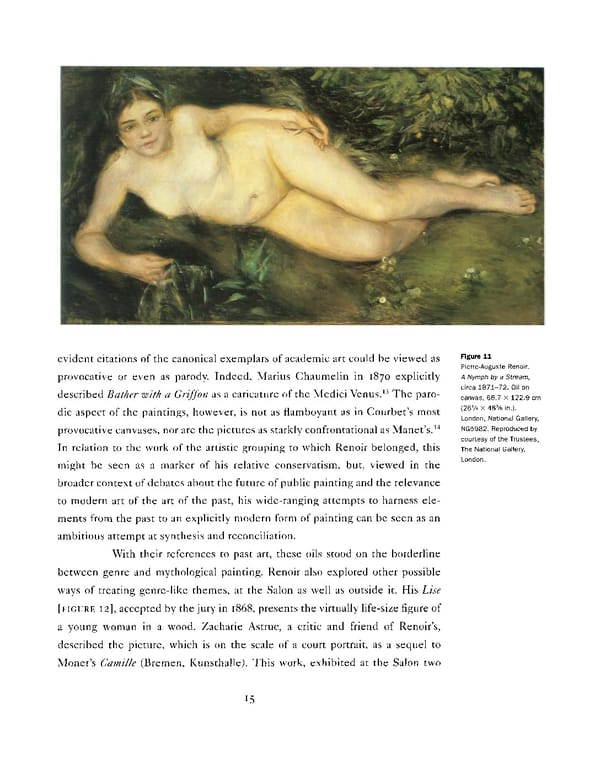evident citations of the canonical exemplars of academic art could be viewed as Figure 11 Pierre-Auguste Renoir. provocative or even as parody. Indeed, Marius Chaumelin in 1870 explicitly A Nymph by a Stream, 1 circa 1871-72. Oil on described Bather with a Griffon as a caricature of the Medici Venus. 3 The paro- canvas, 66.7 x 122.9 cm (26V X 48% in.). dic aspect of the paintings, however, is not as flamboyant as in Courbet's most 4 London, National Gallery, provocative canvases, nor are the pictures as starkly confrontational as Manet's.14 NG5982. Reproduced by In relation to the work of the artistic grouping to which Renoir belonged, this courtesy of the Trustees, The National Gallery, might be seen as a marker of his relative conservatism, but, viewed in the London. broader context of debates about the future of public painting and the relevance to modern art of the art of the past, his wide-ranging attempts to harness ele- ments from the past to an explicitly modern form of painting can be seen as an ambitious attempt at synthesis and reconciliation. With their references to past art, these oils stood on the borderline between genre and mythological painting. Renoir also explored other possible ways of treating genre-like themes, at the Salon as well as outside it. His Lise [FIGURE 12], accepted by the jury in 1868, presents the virtually life-size figure of a young woman in a wood. Zacharie Astruc, a critic and friend of Renoir's, described the picture, which is on the scale of a court portrait, as a sequel to Monet's Camllle (Bremen, Kunsthalle). This work, exhibited at the Salon two 15
 Pierre-Auguste Renoir: La Promenade Page 22 Page 24
Pierre-Auguste Renoir: La Promenade Page 22 Page 24